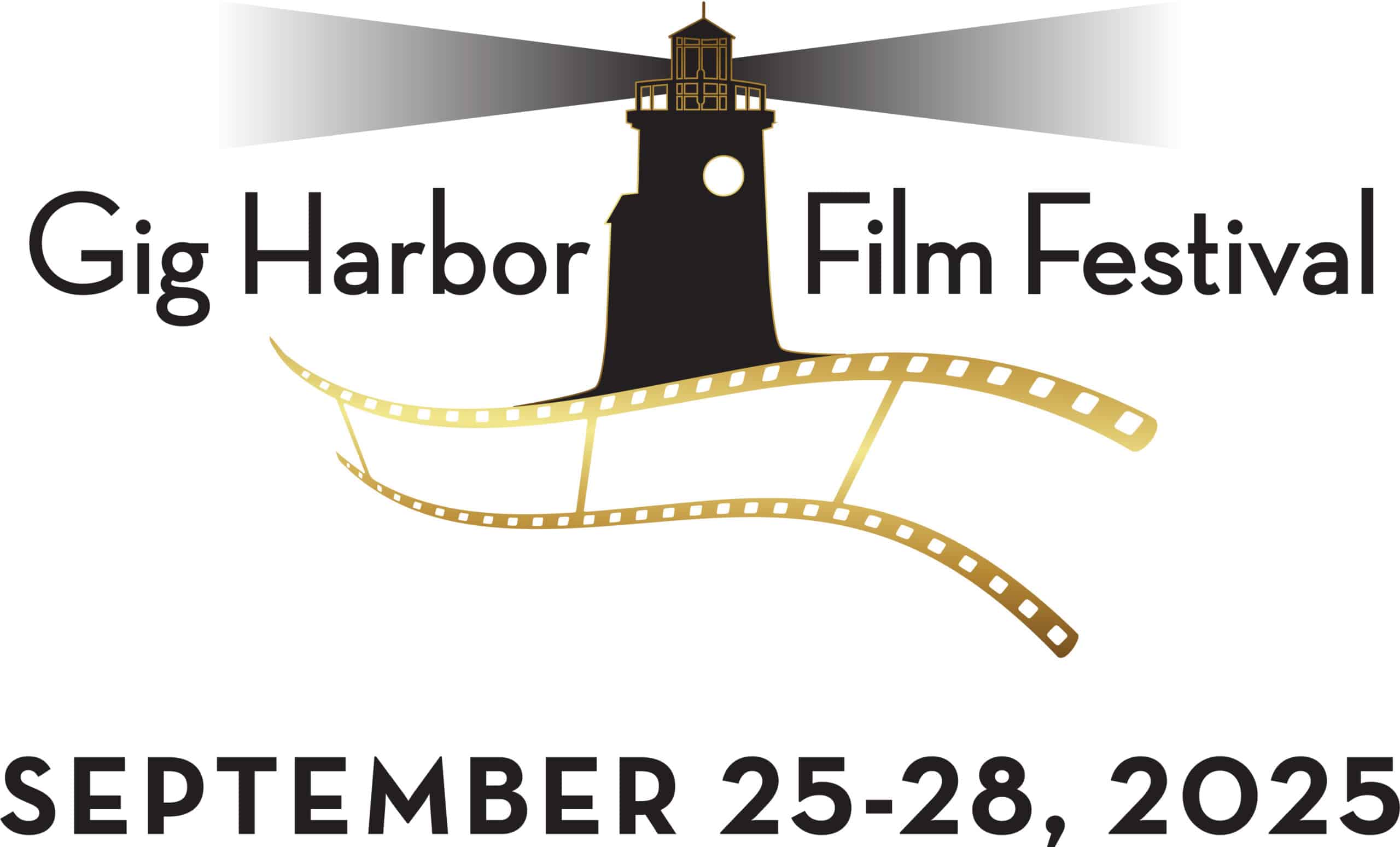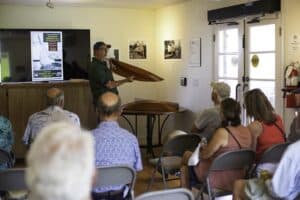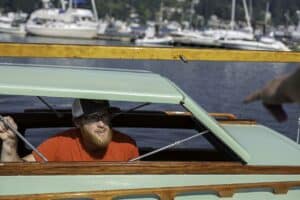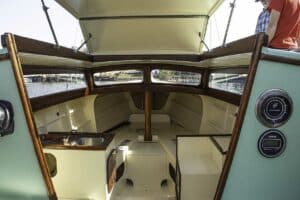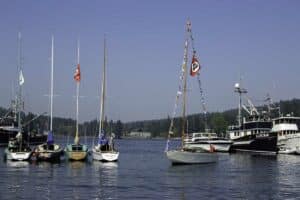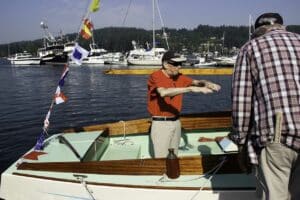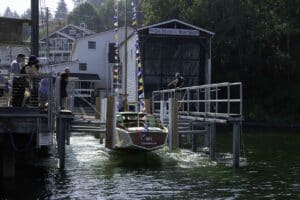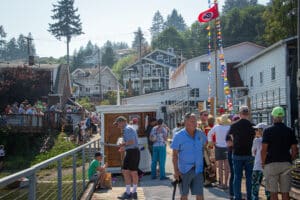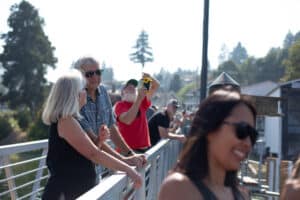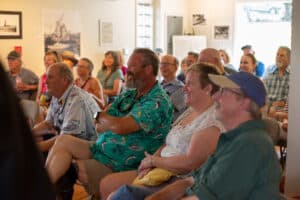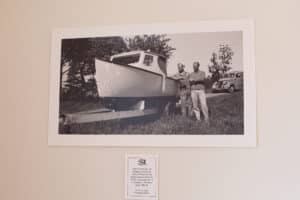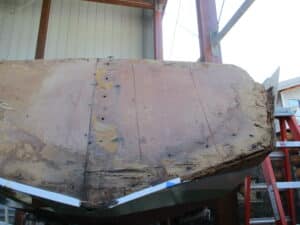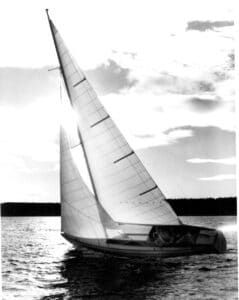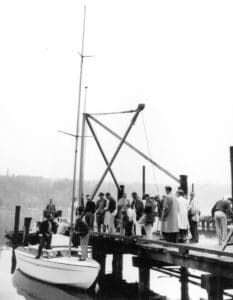Arts & Entertainment Community
Thunderbird No. 1 returns to its native waters
Hundreds showed up to the Gig Harbor BoatShop and historic Eddon Boat Park on Saturday, Aug. 26, to witness the relaunch of Thunderbird No. 1.
Arts & Entertainment Sponsor
Arts & Entertainment stories are made possible in part by the Gig Harbor Film Festival, a proud sponsor of Gig Harbor Now.
The renowned 26-ft sailboat put Gig Harbor and the Eddon Boat Company (now the location of the nonprofit Gig Harbor BoatShop) on the map when she launched in November 1958. Its design was the answer to a challenge presented to boat designers and builders by the Douglas Fir Plywood Association in 1957.
The challenge: Build a boat made of plywood and make it easy enough for an amateur to construct. The association required it to be able to sleep four; capable of racing and cruising; have an outboard engine; and be so fast on the water, it will outperform other sailboats in its class.
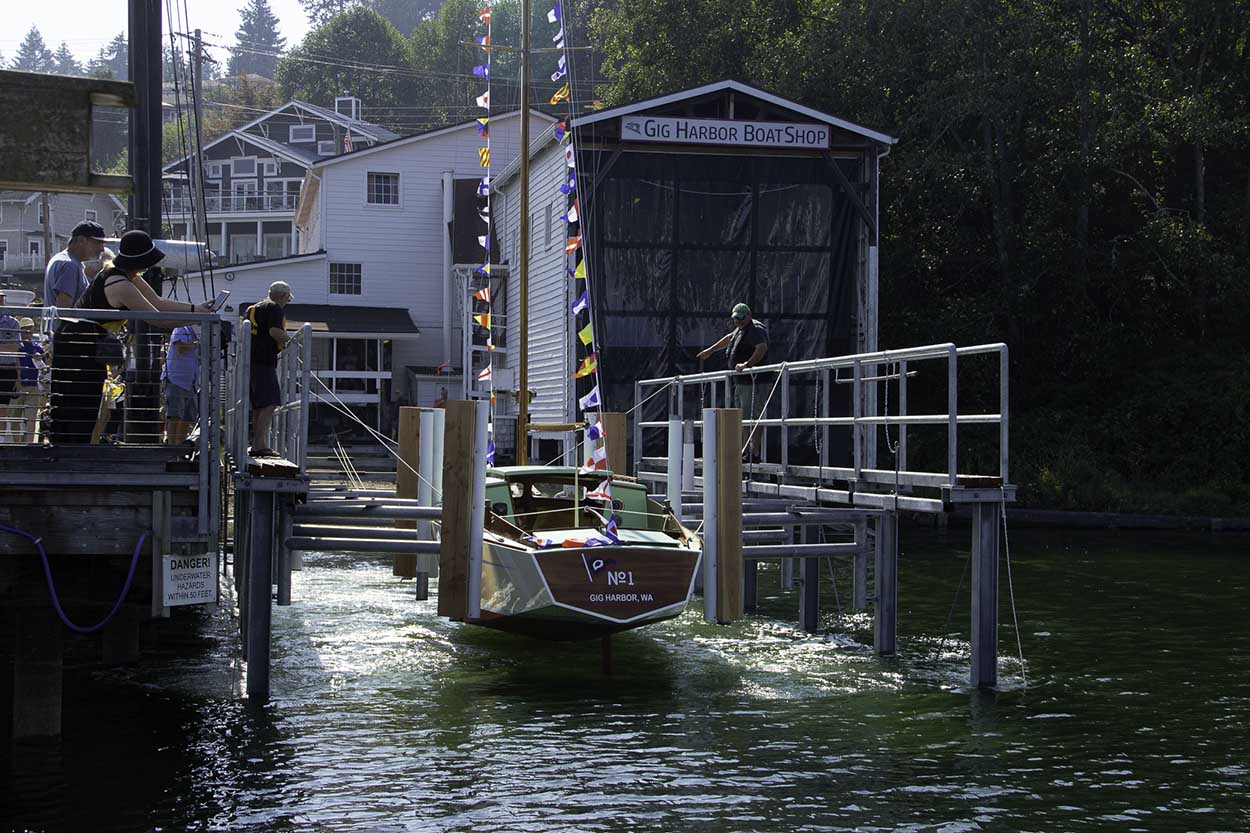
The Thunderbird No. 1 at the moment it returned to the water. Photo by Julie Warrick Ammann
The Hoppen-Seaborn team
Gig Harbor boat builder Ed Hoppen answered the challenge by collaborating with renowned yacht builder Ben Seaborn. The two had worked together on a Seaborn design, the Nautilus IV.
Sketching on napkins in Hoppen’s brick home adjacent to his Eddon Boat Yard, the Thunderbird was born. Many in the boating world considered the design revolutionary.
The plywood construction proved to be so strong, Hoppen and Seaborn modified their design for the eventual prototypes, Thunderbirds #2 and #3, Pirouette and Windsong.
They sold plans for the new prototypes for just $2. The use of plywood simplified the boat-building process. An entire hull panel could be created out of one or two pieces of wood, making the boat-building process more efficient, economical, and user friendly.
Today, more than a thousand Thunderbirds are on the water worldwide, recognized for their speed and handling. Eventually, fiberglass and aluminum replaced plywood as the material of choice for the Thunderbird.
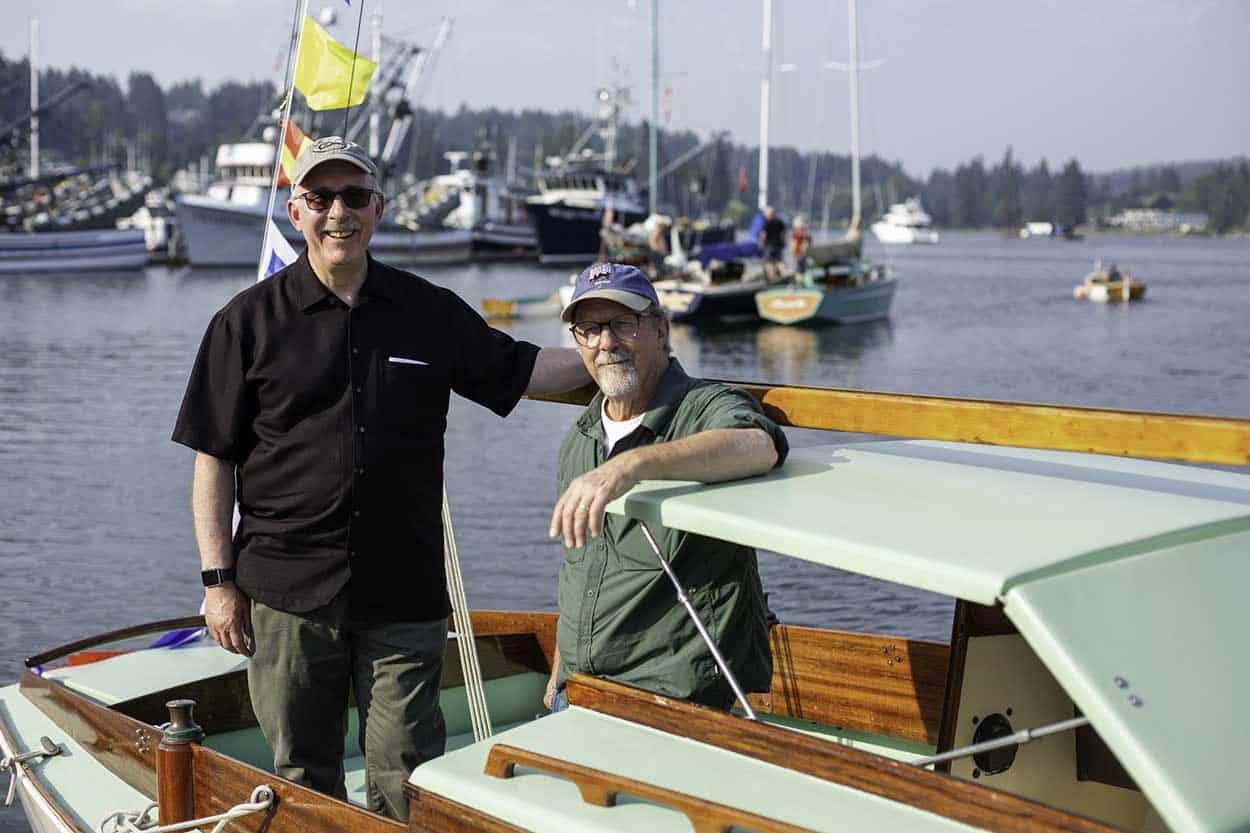
Mark and Guy Hoppen on the Thunderbird No. 1, built by their late father Ed Hoppen. Photo by Julie Warrick Ammann
Restoration
“We had to replace the cabin windows,” said Riley Hall, shipwright and preservation specialist at the Harbor History Museum.
With a team of volunteers, Hall has been leading the restoration of the Shenandoah and Thunderbird at the Harbor History Museum. The Thunderbird hull was on display at the Maritime Gallery in the Harbor History Museum for several years.
“We realized this boat needed a lot of work,” Hall said. Exposure to the elements took its toll on the Thunderbird.
Guy and Ann Hoppen donated Thunderbird No. 1 to the museum in 2002 after they purchased the boat and brought her home to Gig Harbor. Ed Hoppen was Guy’s father.
Harbor History Museum volunteer Dave Ferighi was working on the Shenandoah when he began to notice the Thunderbird’s decline. “That’s how it started. It took me about 3 years, as a part-time volunteer, working on it 8 hours a week,” said the retired biochemist.
Ferighi said that after retirement, he wanted to do a project where he could see the progress daily or weekly. “As a biochemist, all the experiences take a long time.” And it was personal for him. “I have a soft spot for Thunderbirds. It is what I learned to sail on.”
Ferighi stripped the boat’s varnish, remade its cabinetry, worked on the rudder, transom, a beam in the cabin — and the list goes on.
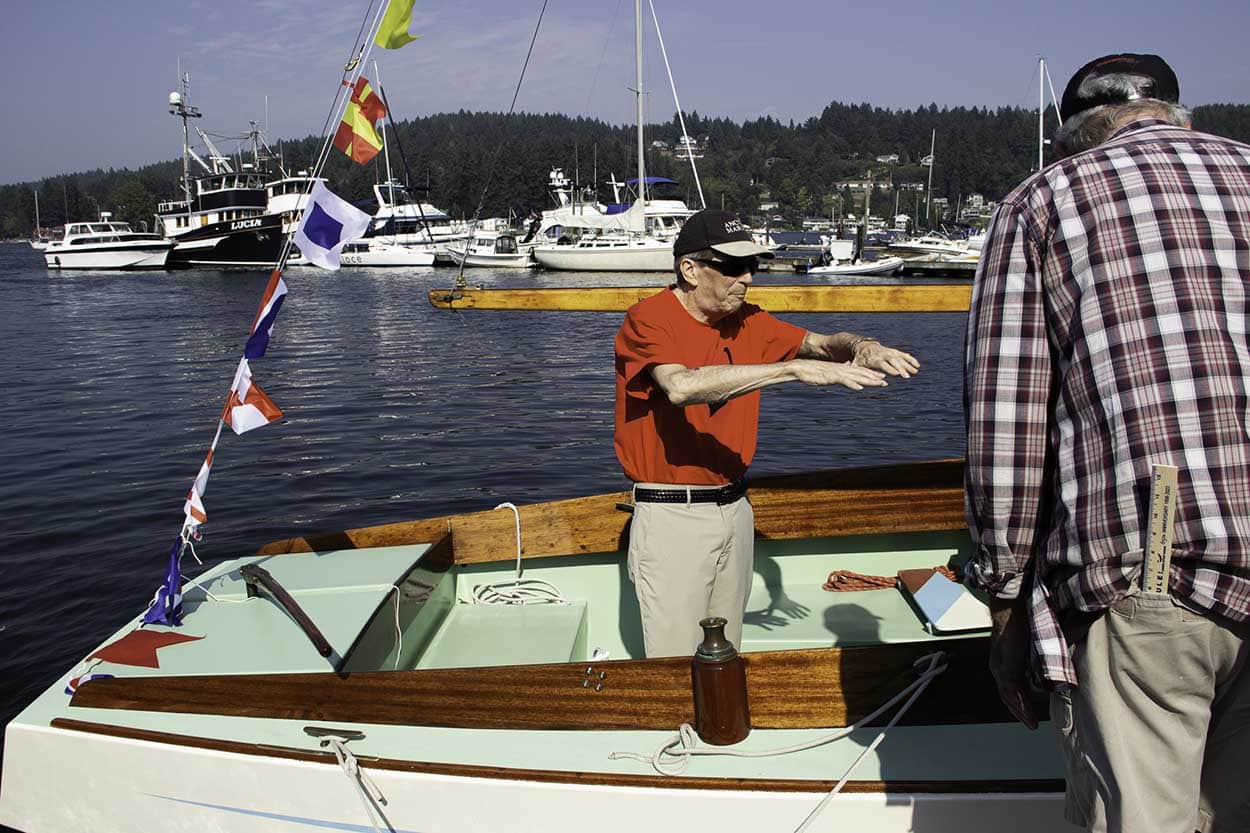
Volunteer Dave Ferighi discusses the restoration of Thunderbird No. 1 while on the vessel on Saturday, Aug. 26. Photo by Julie Warrick Ammann
History of Thunderbird No. 1
The launch party offered a glimpse into the unique sailboat’s history. Inside the old Hoppen family home, now a public building for the community in the Eddon Boat Park, visitors heard from those who knew Ed Hoppen and the Thunderbird best: Mark and Guy Hoppen, Ed Hoppen’s sons.
“My dad, he wanted to be a boat guy,” Mark Hoppen told the audience that filled what once was his family’s living room. The packed room chuckled as he shared heartwarming family memories about his boat-building father. “Would you rather go sailing with me or go to the Episcopal church with your mom?” he said of the day his father convinced him, a kid scared to death to sail, sailing.
A hue called Sally Green was Thunderbird No. 1’s original color, Mark told the gathering. Historical photos and videos provided a glimpse into a time in history when a never-before-heard-of plywood boat would become the talk of the town and well beyond.
“Seaborn and my dad were good sailors. They wouldn’t settle for something less. That’s why they fussed with the shape.” Guy Hoppen, the younger brother, discussed his father and Seaborn’s clever design.
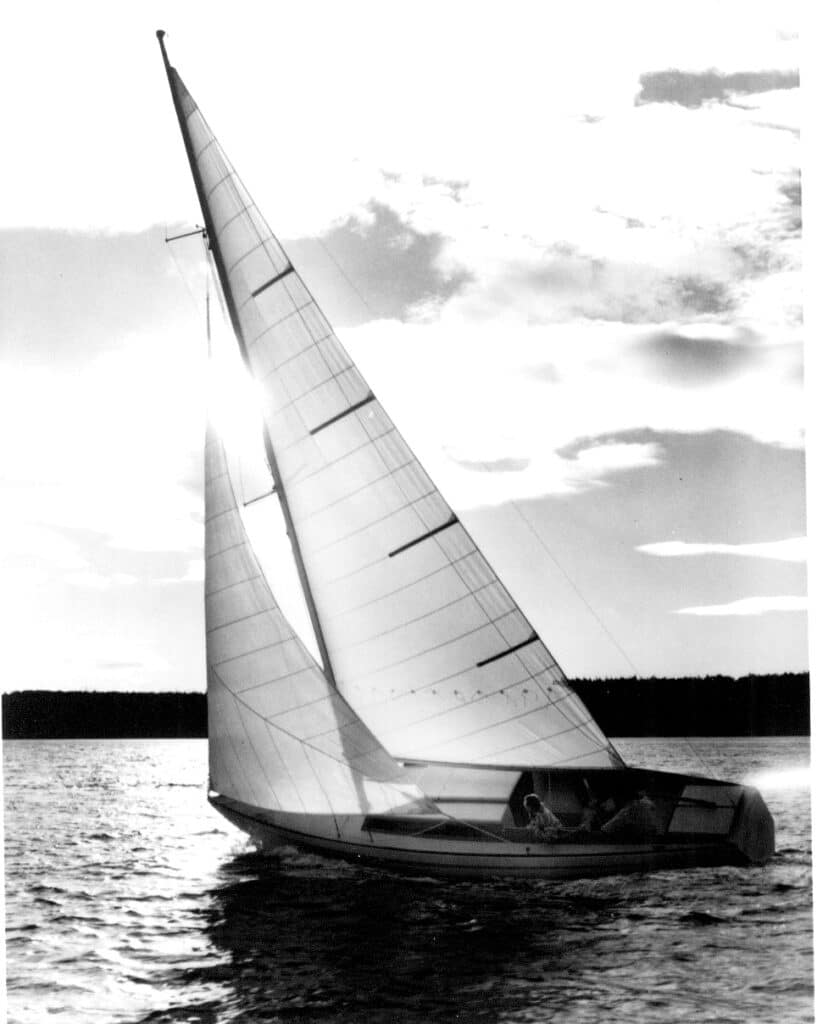
The Thunderbird No. 1 under sail. Photo from Harbor History Museum collection
Relaunching the Thunderbird
Amid the crowd’s enthusiastic cheers, master shipwright Riley Hall assumed the role of helmsman as Thunderbird No. 1 was relaunched, with assistance from museum volunteer Bec Heyman. It’s Heyman’s first time sailing. With the lingering scent of fresh paint, the Thunderbird was slowly lowered down into the water from a platform. Then Hall took the vintage boat on a ceremonial tour around a cluster of Thunderbird boats.
“It was really cool. It was really exciting,” Heyman said of her first sailing tour on the first Thunderbird.
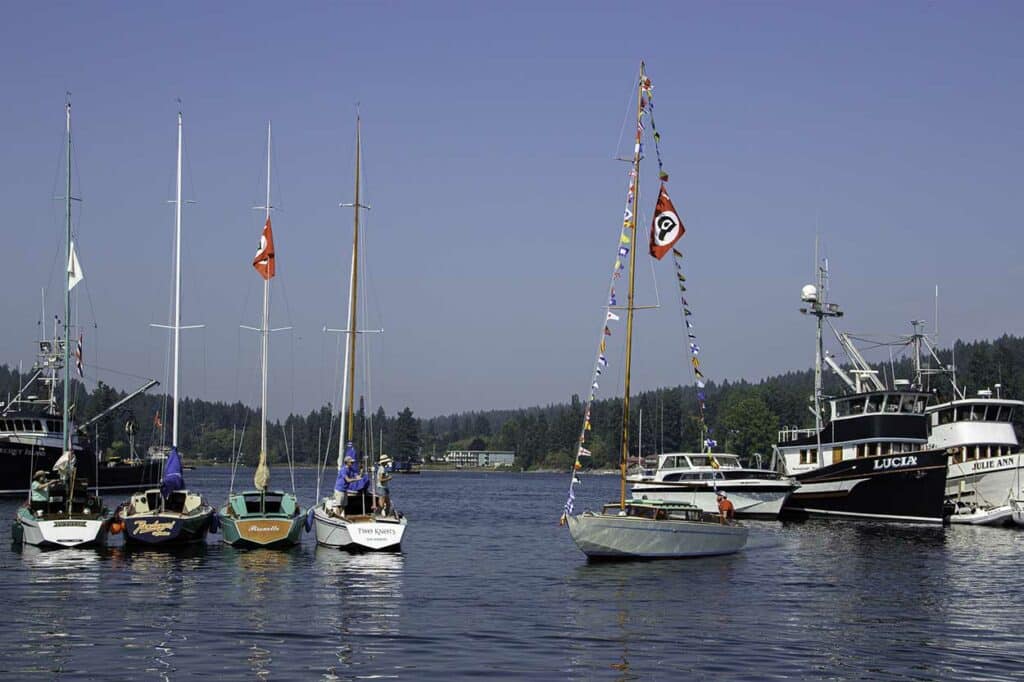
Harbor History Museum Shipwright Riley Hall pilots Thunderbird No. 1 past several other Thunderbird sailboats in Gig Habor on Saturday, Aug. 26. Photo by Julie Warrick Ammann
As children peered into the historical boat now dockside, Hall answered an eager group of boaters about specifications. “Spruce gets darker with age,” Hall said as all eyes looked up to the mast. The wood was repurposed from the Shenandoah, he explained.
Ferighi, the biochemist, now sits in the boat that inspired him in his youth. He basks in his accomplishment as he fields questions. A celebration of maritime heritage is shared among generations young and old.
The boat will sail to the Wooden Boat Festival in Port Townsend Sept. 8 through 11.

